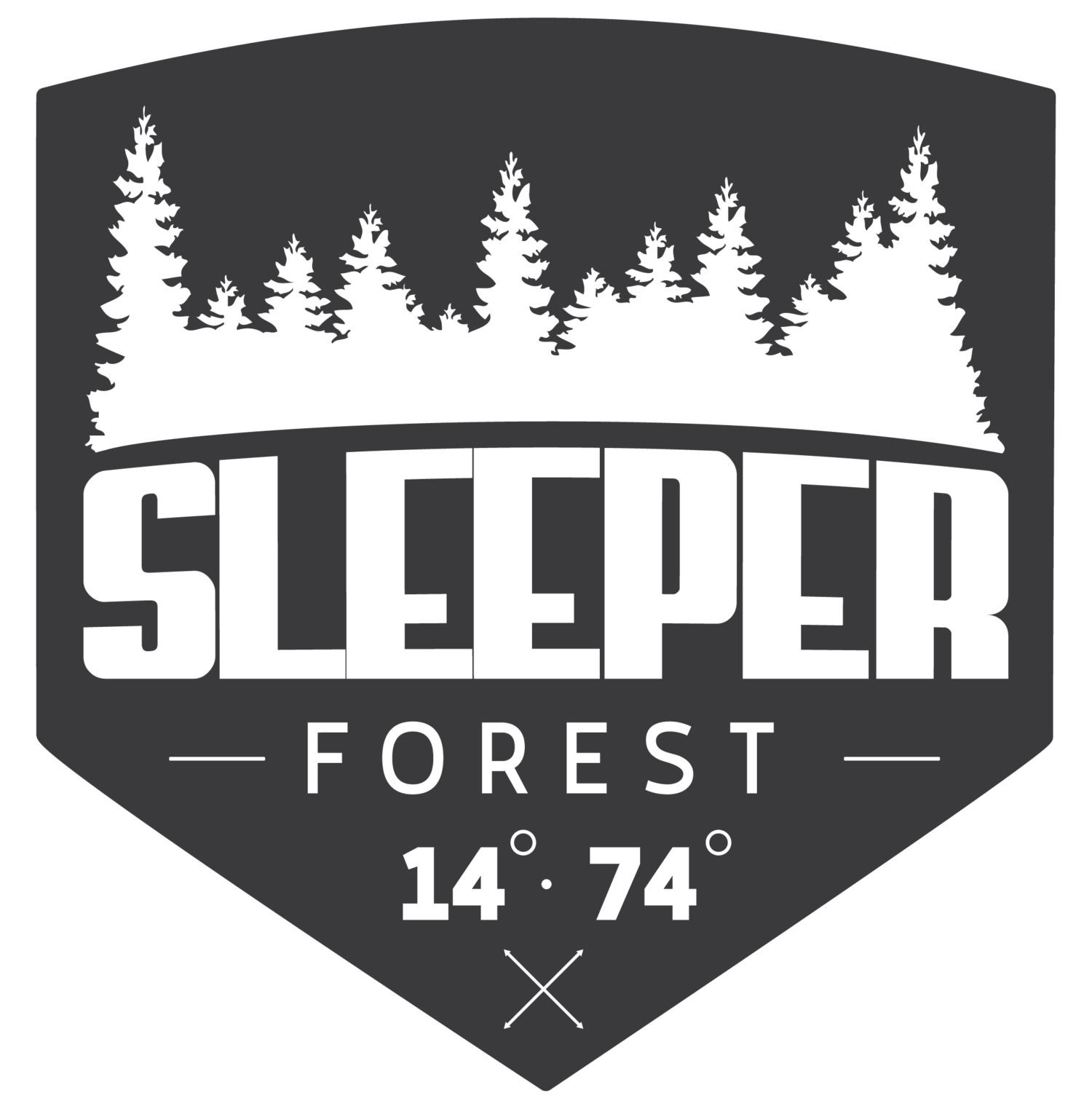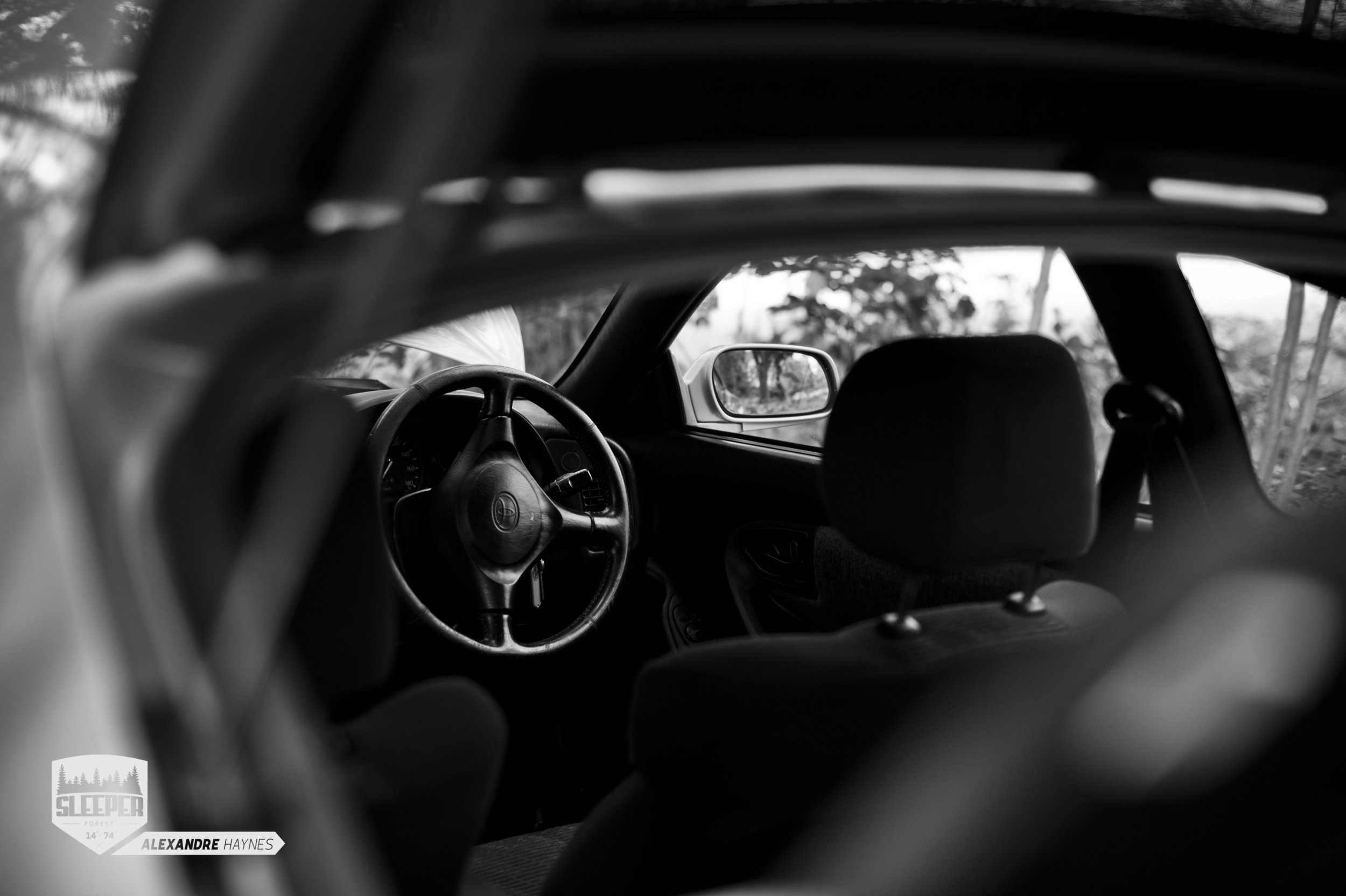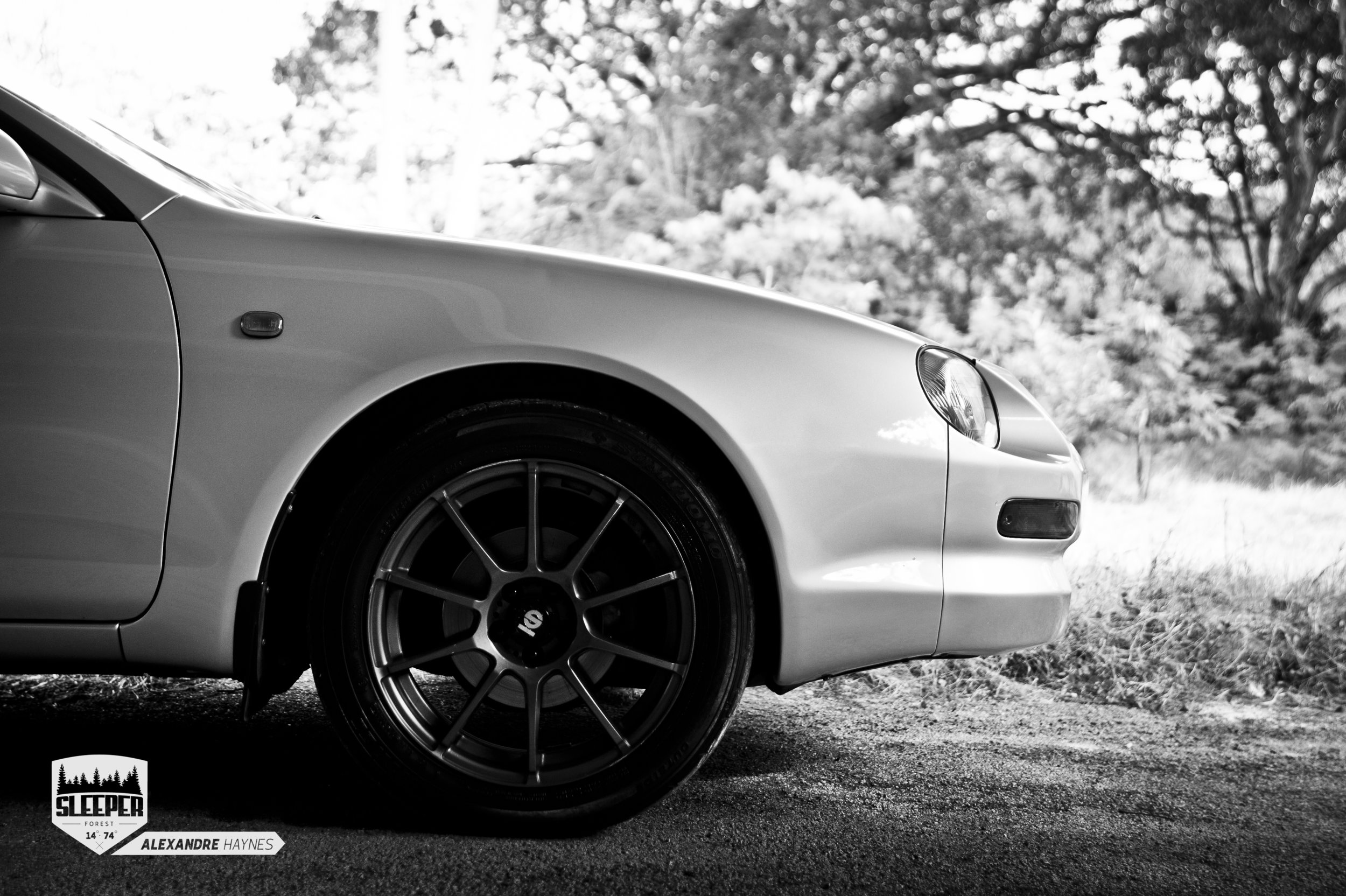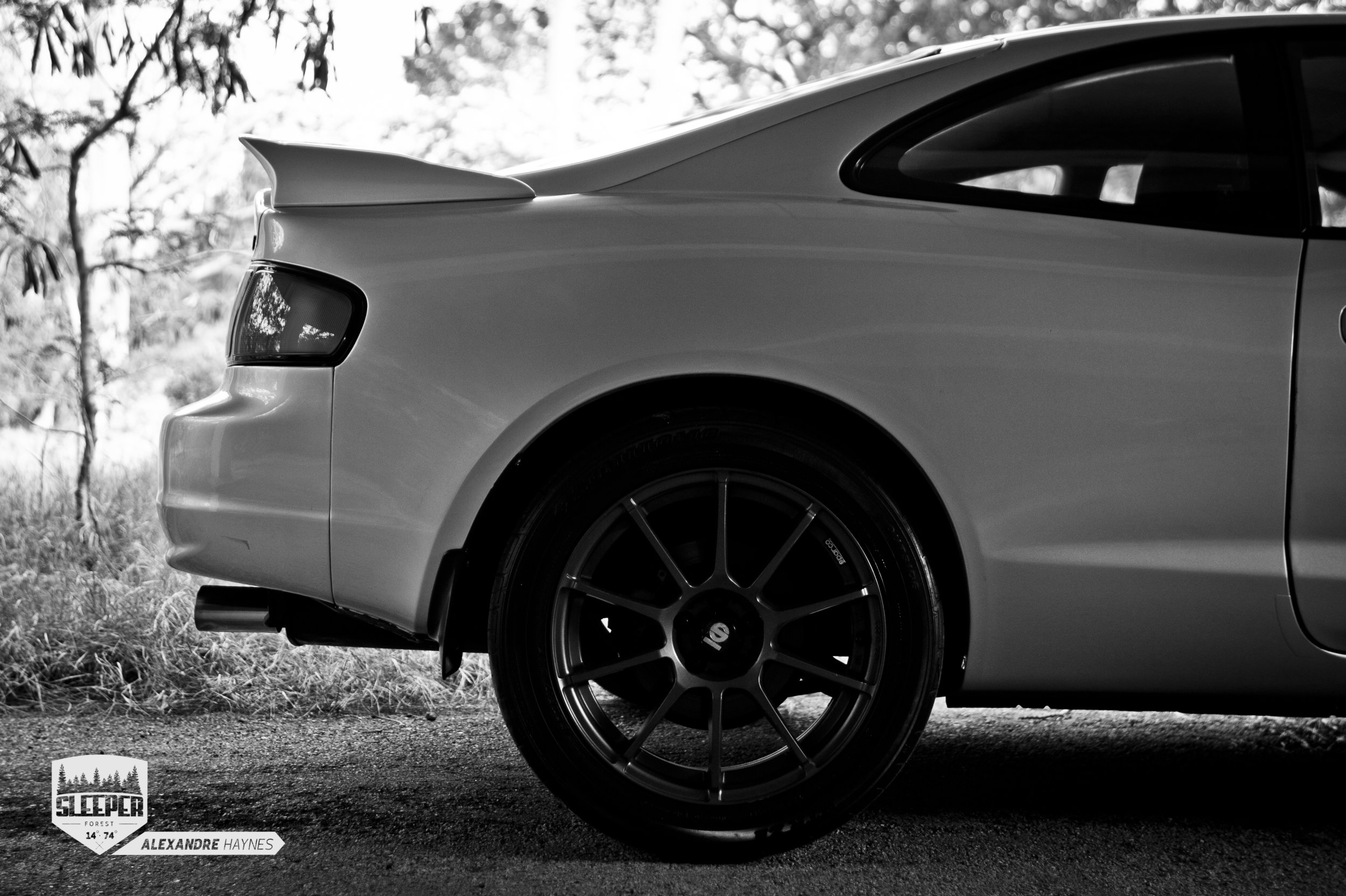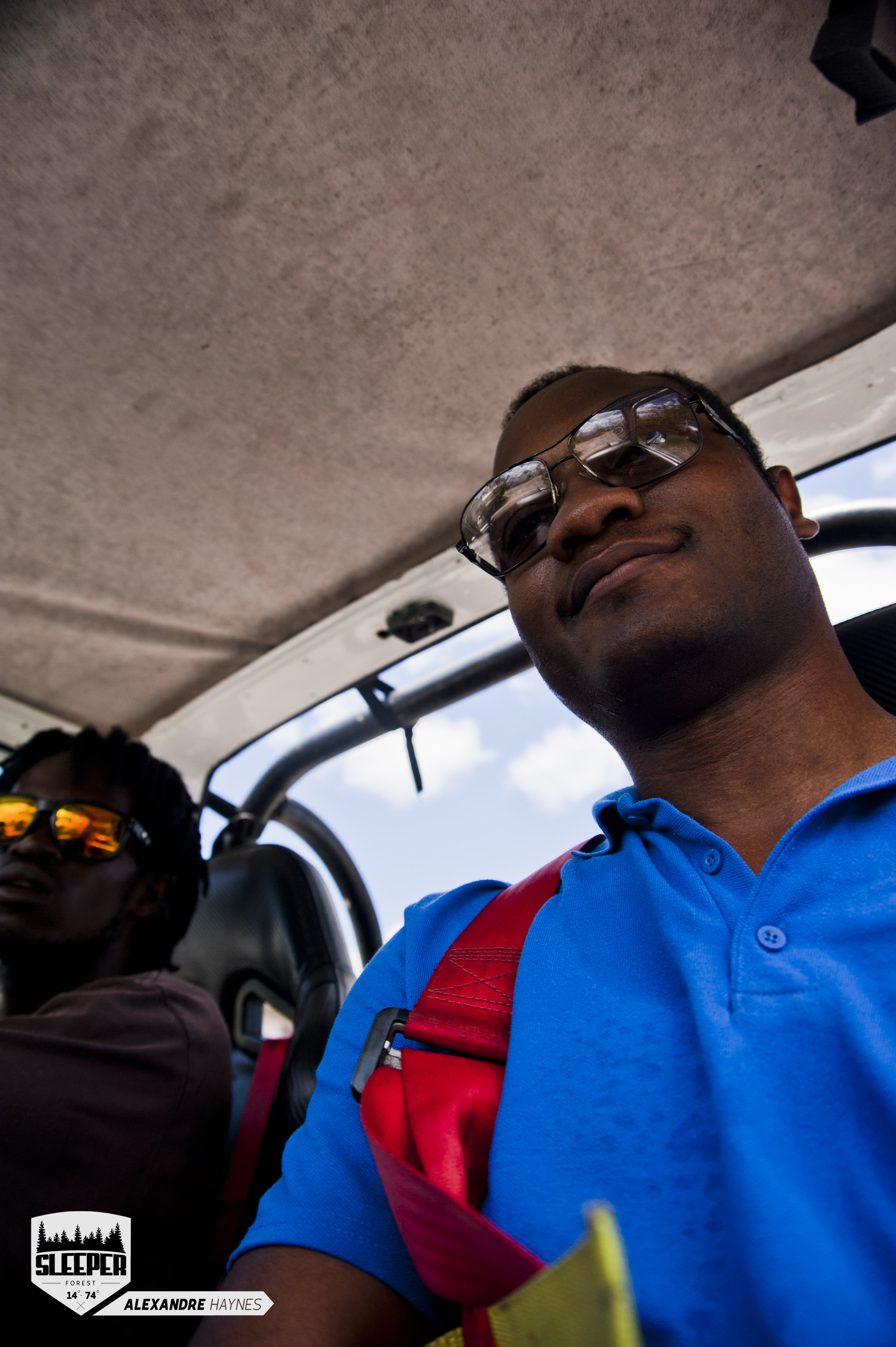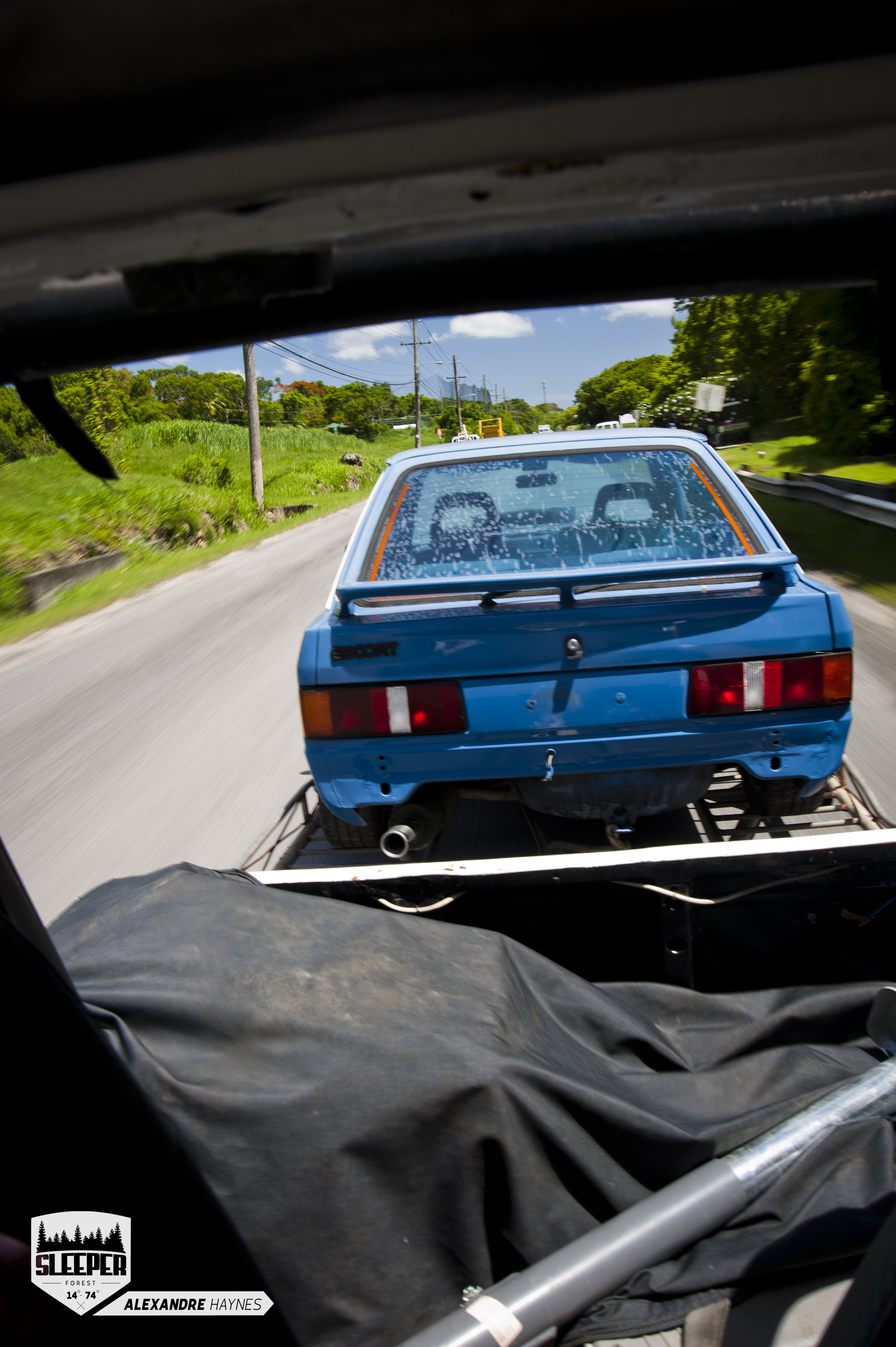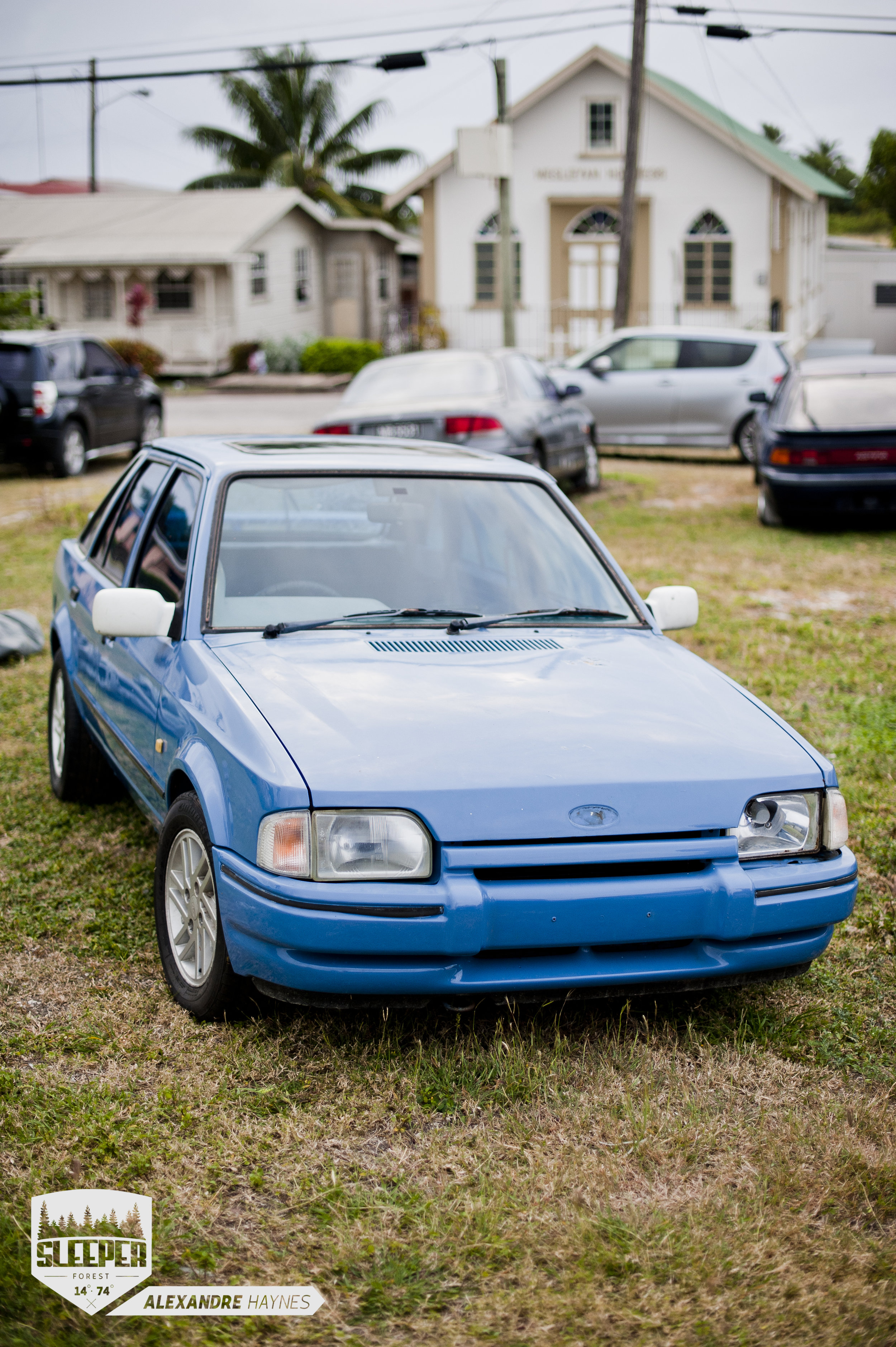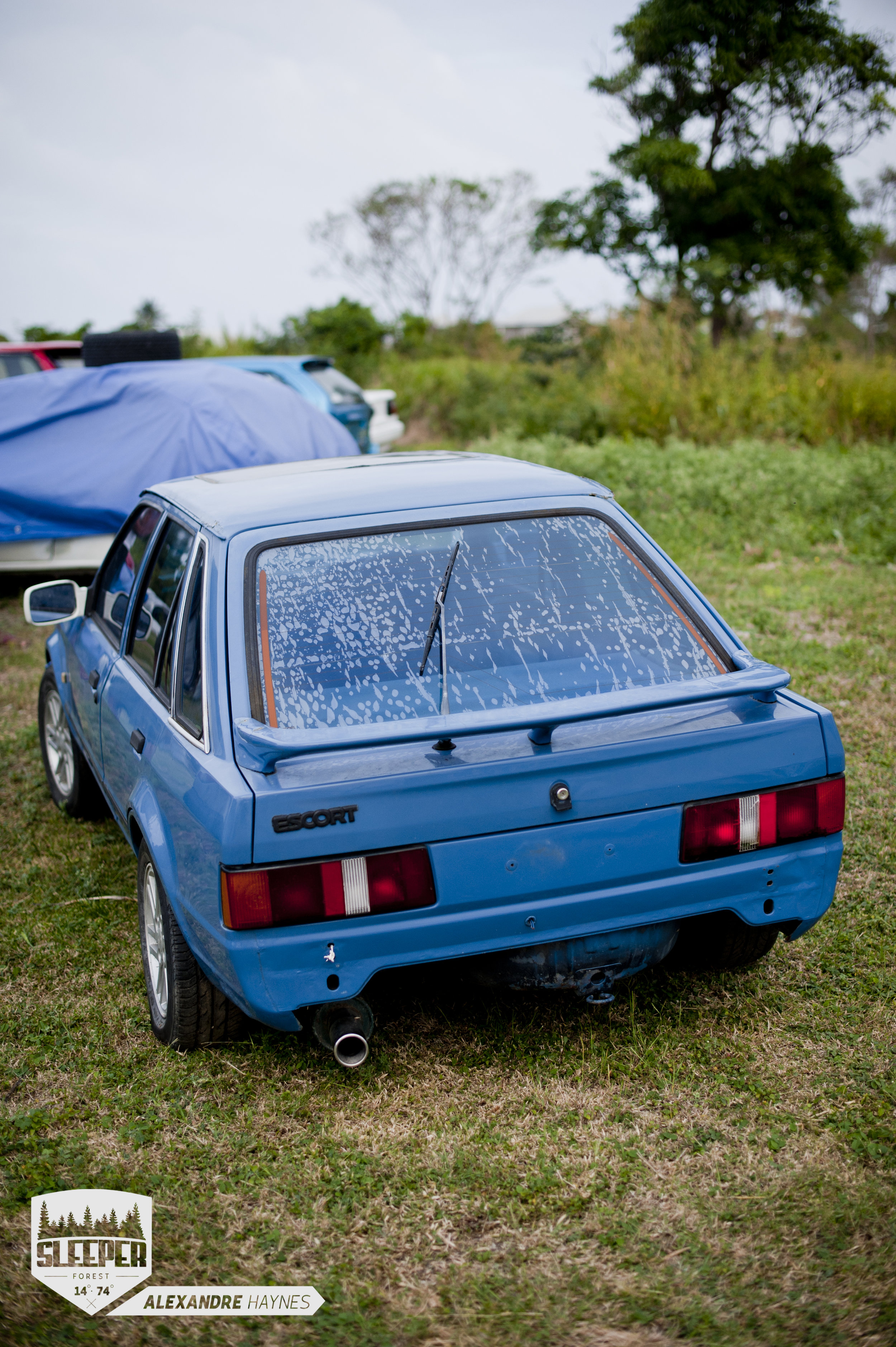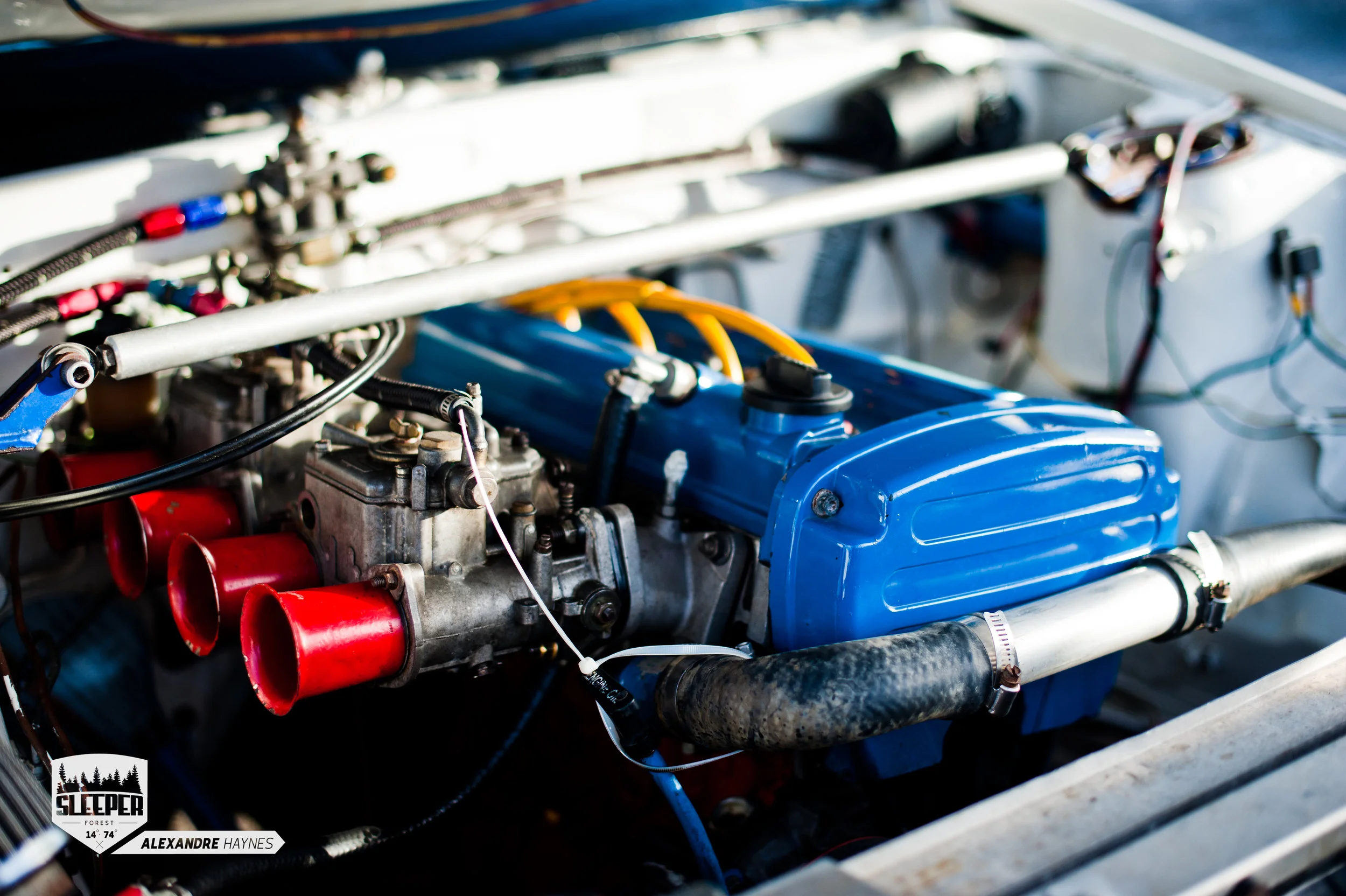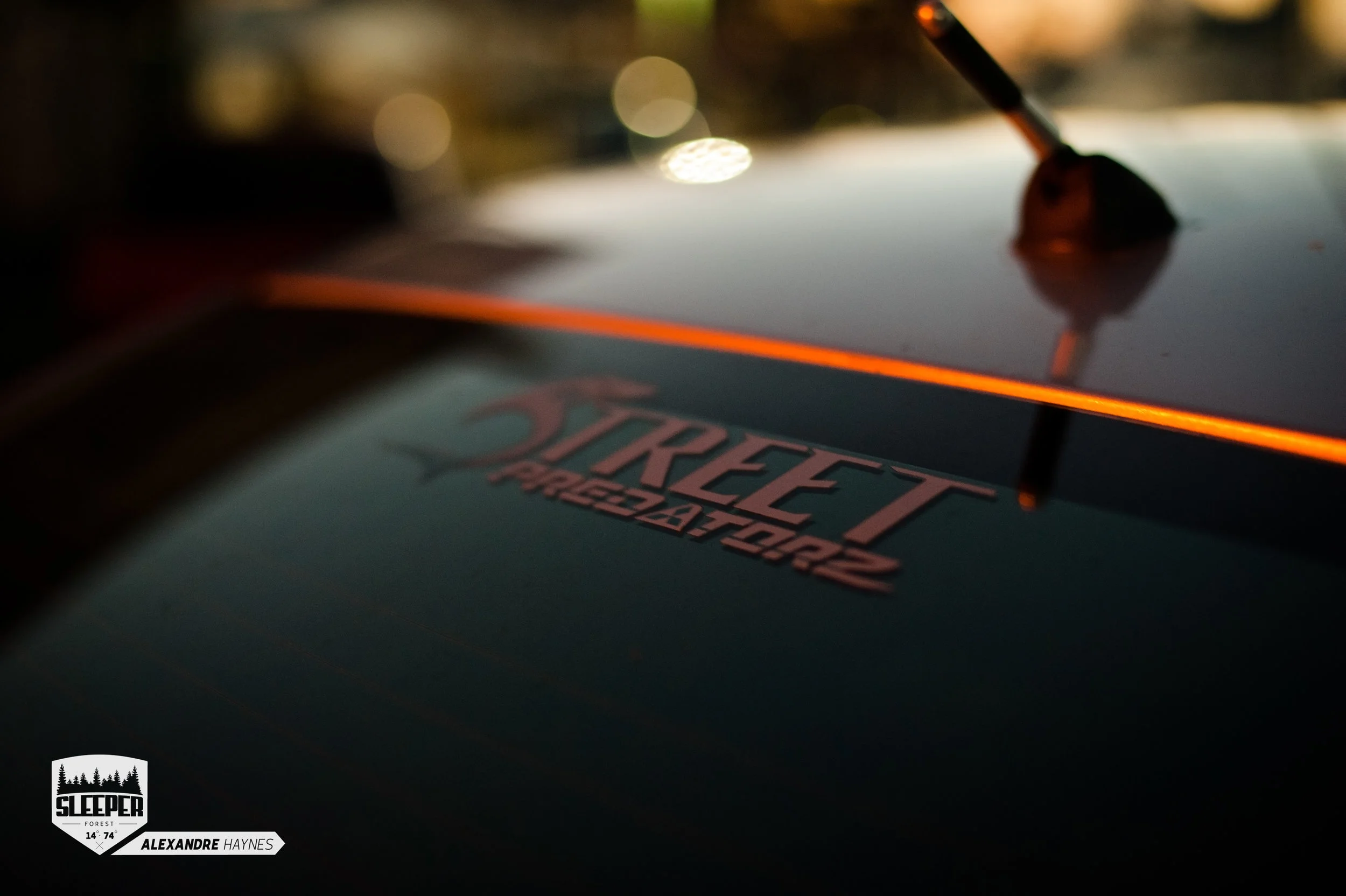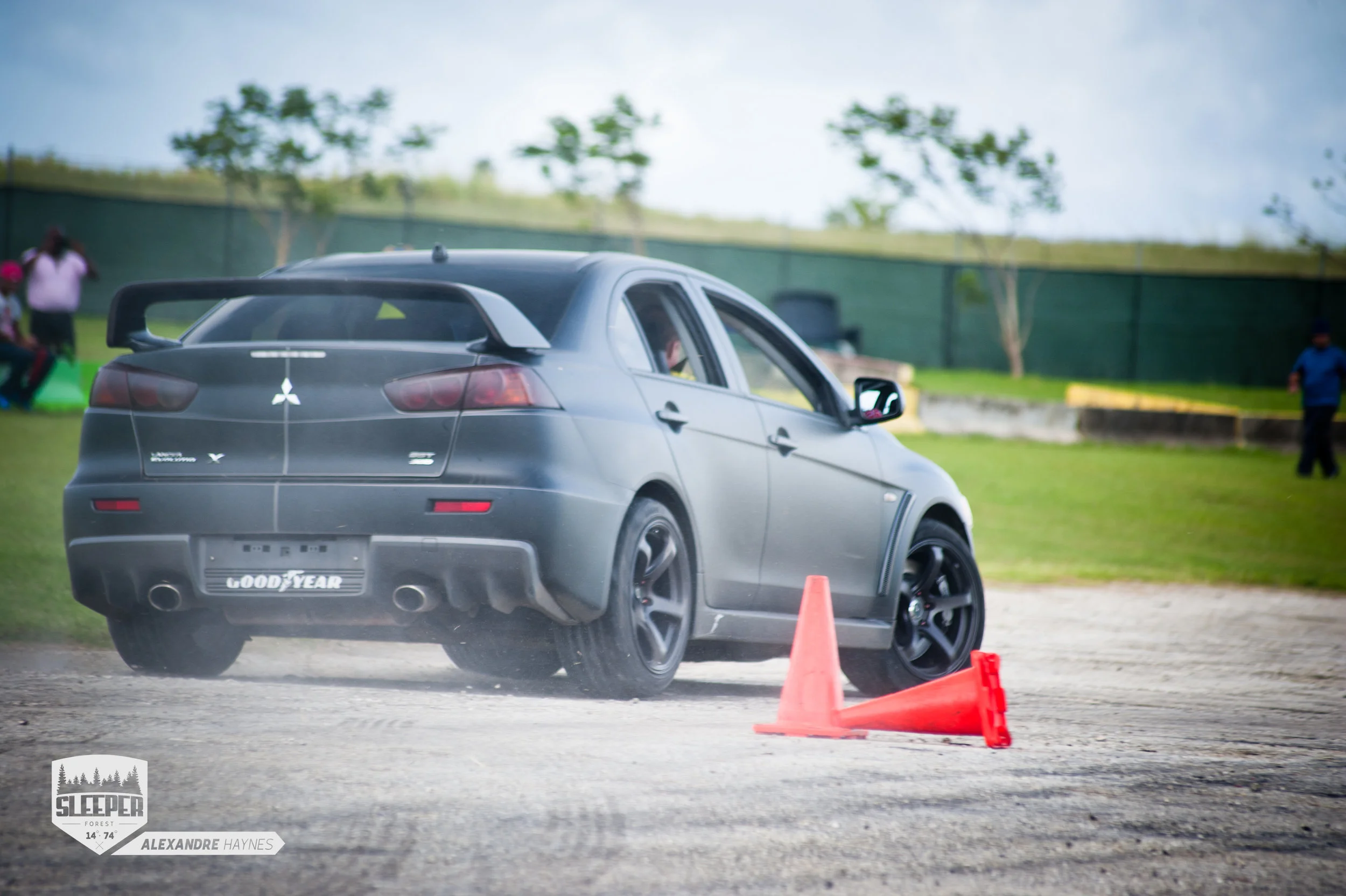The Redline Performance Z
He has a vision of what the Z should really be - a childhood dream come true. This project is the physical manifestation of that vision.
The next logical choice? The heart of Gojira
AN ORIGIN
In the 1960s, Nissan prepared to step out of its comfort zone and market by pairing with Yamaha to create the next hot sports car; the partnership provided a rather disappointing engine from Yamaha in the form of the DOHC 2.0L engine which ultimately proved not to be in keeping with Nissan's standards. The joint project was scrapped and the engine in question was eventually made into prototype and taken to another Japanese car maker - Toyota. Thus, the 2000GT was born.
With the entry of the 2000GT, Mr. Yutaka Katayama, President of Nissan USA, still saw the need for a sports car in the international market at an affordable price. Nissan's Chief of Design at that time, Mr. Yoshihiko Matsuo, was one of 10 individuals tasked with creating such a machine. Matsuo's vision was a race car in every aspect, however there were lines to be drawn in keeping with the president's US market requirements.
The collaboration created the very first Z platform car - the Nissan 240Z as it would be called in the US Domestic Market. The Japanese variant carried the now iconic Fairlady badge - so named by the president of Nissan Motors Japan, Mr Katsuji Kawamata, after his favourite musical. The Z would become Nissan's definition of cool.
A VISION
Enter Chris, owner of Redline Performance Imports, and his rendition of Nissan's 280Z.
“Never. I’ve never driven one, never been in one. I’ve seen one or two driving past me overseas... that’s it.”
Chris has never actually driven a Z, and this makes his choice of project car somewhat peculiar. Despite not having a feel for the car, its performance and limitations as a factory production machine, he has a vision of what the Z should really be - a childhood dream come true. This project is the physical manifestation of that vision.
Building a car is an arduous task, as anyone who has undertaken a project car can attest when they had to change things up for the car to make it to the road or track. Building an ideal, however, is different. Such dedication is pure and unwavering, so instead of taking shortcuts or seeking alternatives, Chris has been steadfastly at work on this car for about 7 years now. There’s a lot of disagreement among fans about which chassis was the best; some argue the 240 was better because it was lighter, and of course it was the first Z. Being the first, there’s a pedestal on which the 240 chassis has been placed - it was flexible, which made it more nimble but alas it was unable to take high horsepower applications. Fast forward to the 280Z, the disadvantages of which were its front and rear bumpers, designed with modern pedestrian safety in mind, ultimately making them ugly. Fortunately, the bumpers can be removed for a facelifted 240Z transformation. The advantages of the 280Z come from its overall stronger chassis which made it extremely desirable in this restomod application.
The chassis was bought in the US, so it started life as a left hand drive but when it arrived in the island from California it was converted to right hand drive and work on restoring the chassis itself began. It was sandblasted, seam welded, epoxy coated, primed and painted - the new seam welds further increasing its overall rigidity and strength. Chris addressed the dated look of the stock Z with a custom upgrade to the front and rear bumpers, which flowed into custom molded extra-wide flares, increasing the aggressiveness and presence of the car. Once the bodywork was completed it was time to work on the engine.
POP THE HOOD
Inner demons
Pop the hood and the pearlescent engine cover really stands out but then the countless man hours poured into this engine bay are evident.
From the factory, Nissan's 280Z came with the largest displacement engine of all Z models at the time - Nissan's 2.8L L-series engine. This line of engines, while awesome in their own right, would not be destined for use in this restoration. The next logical choice? The heart of Gojira - the iconic RB26DETT. Best known for its applications in the Nissan Skyline from the late 80s to the end of the 90s, the RB-series is a direct descendant of the L-series and its spiritual successor. Should the 280Z have been built in the 90s instead of 80s, Nissan would have undoubtedly put this engine as its power plant. Chris' RB26 was imported directly from Japan, and needed some work upon arrival but looking at it now you'll find all the bells and whistles need to make it capable of reaching north of 600 HP.
There is no compromise in quality or customisation in this engine bay.
These custom wheels will corner off the Z
Ceramic coated copper center caps
Those 600 odd horses will be transferred to the tarmac via these custom wheels from Password JDM: 3-piece forged with frosted gunmetal inserts, topped off with a ceramic coated copper stepped lip and center caps. Chris will run a 17x9 up front and 17x11.5 to the rear mounted on spacers to fill the extra-wide flares.
This two caliper set up on the rear is something special: one caliper connects to the upgraded braking system and the other to the fully independent hydraulic handbrake.
The list of modifications, albeit incomplete at the time of publication, is extensive in the best way possible. Here's what it looks like:
- OS Giken 1.5 way LSD
- Techno Toy front + rear lower adjustable control arms
- Techno Toy front tension rods
- Motorsport Auto upgrades roll bar
- Energy Suspension polyurethane bushings
- Ground Control custom springs
- Beta Motorsports coil sleeve kit
- Tokico Illumina adjustable shocks in sectioned struts
- MOMO Protipo steering wheel & hub
- MOMO N55 seats
- Arizona Z Car mustache bar & dog legs
- Arizona Z Car rear brake kit
- Arizona Z Car billet 'bump steer' adjusters
- Custom rear brake bracket
- Wilwood Dynalite handbrake calipers
- Wilwood front big brake kit
- Wilwood compact handbrake cylinder
- Wilwood brake proportioning valve
- Beta Motorsports carbon fiber bonnet - customized vents
- Beta Motorsports fiberglass back hatch
- Tomei camshafts
- Tomei head gasket
- Tomei oil pump + head restrictors
- N1 water pump
- HKS burnt Titanium muffler tips
- AEM V2 plug & play management
- AEM Wideband air/fuel gauge
- Aquamist water injection kit
- GReddy timing belt
- GReddy intake manifold
- GReddy thermostat oil cooler adapter
- GReddy style upgraded intercooler piping
- Magnaflow 3" to twin 2.5" muffler
- Vibrant 3" twin race resonators
- ARP bolts - head / conrods / flywheel / exhaust studs / wheel studs
- Aeromotive fuel pressure regulator
- Aeromotive canister fuel filters
- ATL wheel well fuel cell and floater
- Kumho Ecsta intermediate tyres
- Cosworth engine bearings
- Raw Brokerage aluminum pulley kit
- Raw Brokerage complete engine bolt kit
- Tilton compact clutch master cylinder
- NISMO upgraded clutch slave cylinder
- Nitto clear cam cover
- Autopower roll bar
- NRG fender washers
- Tilton clutch cylinder
- CP pistons - 9.0 compression
- Manley conrods
- Manley valves
- Manley valve springs + keepers
- Supertech valve guides + seats
- DEI Reflect-A-GOLD firewall sheeting and tunnel cover
- Aerocatch locking hatch pins
- Mishimoto 2-core aluminum radiator
- Mishimoto radiator electric fan + shroud
- Earls Performance oil cooler kit + lines
- Fluidampr crank harmonic balancer
- Garrett GT2860R twin turbochargers
- OBX exhaust manifolds and downpipes
- Holley Performance PTFE brake + fuel hose and fittings
- Silicone coolant and vacuum hoses
- DeatschWerks 800cc injectors
- Speedhut custom gauges
- Walbro twin 255lph fuel pumps
- McKinney conversion engine mounts
- McKinney custom drive shafts
- Upgraded 300ZXT CV half-shafts
- Motorsport Auto stub axles
- SPEC lightened flywheel
- SPEC Stage 3+ clutch + pressure plate
- Upgraded 300ZXT brake booster + master cylinder
- Rockford Fosgate speakers
- Muteki neochrome lightweight wheel nuts
- Wiring Specialties custom engine harness
- Custom 'Z' rad / intercooler bracket
- Custom engine oil sump
- Custom & flocked dash and console
- Custom extra wide molded flares contoured to front + rear bumpers
- Shaved indicators / antennae / fuel door
- Carbon fiber windshield cowl
- Custom fenders / turn signals
- Custom side skirts
- Custom rear end and bumpers
- Custom rear twin out stainless exhaust
- Motorsport Auto rear spoiler
- Motorsport Auto fiberglass front bumper
- Motorsport Auto modified fiberglass air dam
- Louvered inspection lids
OUTLOOK
With almost a decade under the belt on the build, the Z is nearing completion - word from Chris is that the vehicle will finally hit the streets in the coming weeks. Though it has never been driven on the road locally, it is by no means a secret to the public. Z fans wait with baited breath until the street arrival of such an iconic Z, and Chris is sure to acquire the correct parts to lay down some serious rubber.
Until then, enjoy these images from our interview.
Man and machine
ADDITIONAL IMAGERY
Check out Chris' store:
Website: Redline Performance Imports
Email: info@redlinebarbados.com
Instagram: @redlineimports
Facebook: @redlinebarbados
A JDM Pony Car
For me it feels like the GT Celica doesn't get enough love, its bigger brother the GT 4 left some really, really huge shoes for it to fill.
The term “Pony Car” is thrown around in reference to the Ford Mustang, but it really became a classification of its own. An unlikely brand, Toyota, decided to pick a spot in this class of vehicle and create a cheap, compact sports car for the masses. This car was not big on power, neither was it big on weight, it was just enough all around for the driving experience, and over the years it’s varying evolutions has stayed true to this principle.
This JDM “Pony Car” is known as the Toyota Celica, or “Celica”, as British or Aussies would call it. It’s name derived from its Latin root meaning Celestial. Going through the history of this car though would take a long time, as the line was established in 1970, with its clear similarities to the fastback Mustang being quite evident. Going into the 90’s however, the Celica over its 5 generations, was really coming into its own, with the offshoot of the Supra Mk 3 and MK 4 being derived from its earlier chassis's as well.
A 90's restomod
This particular Celica didn't always look the way it does now, in fact, the car is actually a full restoration. It'll probably be up for debate in the comment section of the article, saying that buying a Celica GT is a waste of time. For me it feels like the GT Celica doesn't get enough love, its bigger brother the GT 4 left some really, really huge shoes for it to fill.
The GT isn’t a turbocharged car, it isn’t 4WD, and it isn't amazingly fast, but it’s special in a lot of respects. Toyota brought their expertise to this car as well when it was being developed, and although it may be considered down on power, it's really high on fun.
It utilizes the same powerplant found in the Toyota MR 2 and an older version of the same motor found in the JDM Toyota Altezza. It's naturally aspirated 3SGE engine behaves more like a 4AGE with a lower torque band but the power is still high up in the rev range. It's a momentum car. Fortune favors the brave when you want to get the most out of this car.
The Celica GT's chassis also benefits from the GT4, although the rear subframe is a bit different, it's wheel arches and layout is basically the same as its homologation variant meaning it feels like well balanced and well put together car. Changing the standard 15-inch road going wheels with larger 16-inch wheels really set it off.
Looking ahead
JDM cars are having a hard time in many ways attaining a Classic status, and it seems like some of them have to work twice as hard as many other cars from other regions. What's contributing to the value of JDM cars though, are actually what's going toward their detriment, it's really an oxymoron in it's greatest form. Modders have taken every clean slate and written all over it. JDM cars have been praised for being fun to mod, and fun to change, to the point that finding some models like this Celica in it's purest form unmolested is next to impossible.
JDM cars are also subject to fads. The internet moves in cycles, finding one model after the other where all models are used up and it's on to the next one. So the next time you see those 10 mm spacers on E-bay, or you see that "Cold Air Induction" mod coming your way, don't do it. Enjoy what you have, or mod your car in a more tasteful way, because you may be sitting on the next gold mine.
Happy Motoring! - Alex.
Additional Images
Mk 4 Escort Update
With most of the interior out though, Alvin and I were really able to see where all the rust was at in the chassis. Outside of the rust in the expected places, he spent some time fixing some badly done work made by the previous owner. The car has been through a lot through its time here and it's actually quite refreshing to see it being stripped down and refreshed.
Well, its a lot rustier than I thought it would be, but it can still be saved.
Since the last time I posted about The Escort, if you have been following us on Instagram, I've been live streaming the progress of the car. If you haven't seen it, that's okay, you can read it here. The car has been stripped, that took about a day, to get everything out safely. The car is 31 years old, many of the interior's parts have rotted or become excessively brittle, we really need to pay due attention to things.
Trash car will soon have it's time to shine.
With most of the interior out though, Alvin and I were really able to see where all the rust was at in the chassis. Outside of the rust in the expected places, he spent some time fixing some badly done work made by the previous owner. The car has been through a lot through its time here and it's actually quite refreshing to see it being stripped down and refreshed.
The project as it stands now.
“Yeah we can still save it, don’t worry.”
The windscreen and sunroof were removed as well, and I finally got some good news, the sunroof rack was not rusty, at least that bit was fine. The rest of the car though, I'd have to leave in his competent hands.
Let's start talking modifications though obviously, this is a bit more than just a full restoration of the machine, it's a build. Being that it's a build, the best time to delete, or reinforce usually is at the stage of bodywork. I have a few things in mind for the car, that gives me personal satisfaction, and a few things the car will need to prepare it for the new heart it will be receiving the coming weeks.
First of all, I am killing those rear triangle things Ford confidently adds to their 4 door models, I hate those things, toss them please, never let them see the light of day. With the rear side window delete and replaced with some sheet metal, it should help give the car a more modern feeling.
I'll be adding some structural mods that are functional as well, The rear shock towers will have a strut bar, and one will be added to the front of the car as well, in order to beef up the feel of the car. The rear strut bar will be a homemade job, so we will be doing some planning in order to make it work.
The interior of the car is clearly in arrears. I'll be doing some cosmetic changes to the door panels. The old door panels have really seen its share of life, so I will be replacing them with some aluminum cuts. I am not sure if this will save weight, but it would definitely look a lot cleaner when it's finished, it should have a nice carpet finish on it.
The final piece of the puzzle would be finding a new windscreen. The old one started to split with age, and it became opaque around the edges. I am starting to believe that finding a donor car would be correct action to take, but I will see what we can work with first. Surprisingly enough, seeing the entire car broken down is giving me a lot of motivation to get it up again.
Stay alert for more updates on the build as it continues. Until next time, happy motoring!
-Alex
The Phoenix
The lancer shell is pretty rusty but the EVO 3 shell though not perfect is in good shape. Every weekend he's been transferring parts he can use from the Lancer to the EVO, control arms, brake and fuel lines, drive shaft etc.
The 90's were an amazing time in the Japanese automotive industry, it is often referred to as JDM's golden era and with good reason.
In the 90's, it can be argued that cars such as the Honda NSX, the Toyota Supra, the Subaru Impreza WRX STI, the Mitsubishi Galant VR4, the civic and Integra Type-R, the Mazda RX-7, the Nissan Skyline GTR and of course the Mitsubishi Evolution were in their stride. These offered a more hands-on approach to driving than their later iterations.
I got to spend some time with a friend of mine. He owns a project car. He's restoring a Mitsubishi Evolution 3. His name is Mark and although this isn't his first project car it's certainly one of the most interesting. Mark has been around cars a long time he learned all he knew about working on cars from his father and other "old heads" he hung around, after that it was easy to apply what he learned.
Humble Beginnings
His first project was a 1991 Toyota Starlet Soleil it was automatic and had a 4efe engine. He converted it into a GT Turbo Starlet. He replaced all the body panels, interior trims, and lights with those of the GT Turbo model. The build was pretty extensive. Later he got an LSD manual gearbox, converted the car to manual, turbocharged the stock 4efe engine and ran it at 7psi of boost. From there Mark had to make a decision on what his next step was going to be with the car. Originally he was going to swap the engine with a fully built 5efe engine and add some boost but he then decided to do something different and take a 4agze from an ae101 Toyota Levin. This engine was supercharged and that was causing some problems while mounting the engine so the decision was made to turbocharge it with a td05 turbine.Supporting moods were then made so it could actually handle this power. For suspension, he used Buddy club coil overs, for brakes at the front bigger hubs were fitted then 10" slotted StopTech rotors, attached to those were 4 pot Wilwood calipers and at the rear stock GT Turbo calipers were used. I'm sure I missed some stuff but as you can see it was an ambitious build.His next project would be a bit more challenging. Due to his love for 90s cars he ended up restoring a Mitsubishi Evolution 3, one of the few in the island. The build hasn't been going on for very long but it's shaping up nicely.
The Phoenix
Mark has given the car the name The Phoenix and in order to raise it from the ashes, he has been using two rolling shells, a 1996 lancer GLX shell, and the EVO 3 shell. The lancer shell is pretty rusty but the EVO 3 shell though not perfect is in good shape. Every weekend he's been transferring parts he can use from the Lancer to the EVO, control arms, brake and fuel lines, drive shaft etc. When I got there he was in the process of removing the fuel tank and drive shaft.
Life as a donor car is hard.
Mark does the majority of the work on his project on his own, he's the type that believes if something needs to be done it's best to do it yourself, although, when he runs into trouble he'll be the first to admit he needs help or that he doesn't know what he's doing. It's all a learning experience after all and project cars tend to teach us a lot.
The goal for the car right now is to get it running but Mark does have big plans for it in the future. He wants to do a full build on the engine, fully forge it, bigger turbo etc. The end goal though is to get the car into the 6-second bracket on the 1/8 mile drag strip (we don't have a 1/4 mile strip here). This goal is very obtainable the stock 4G63T makes about 270bhp stock in a chassis weighing 1260 kgs or so, the same weight as my Subaru GC8 WRX, it'll be mighty quick.
This build really resonates with me as we both own 90s cars, rival cars of the same golden era. Also, the first cars we put a lot of work into were both Toyota Starlets. Watching this build I'm living vicariously through Mark and I hope he meets his goal of finishing the car this year.
Oringal Momo wheel
A good days work.
Building a car is all about passion, project cars test you in every way imaginable and they may not be for everyone but if you have the drive, there isn't a more rewarding experience.
We will be keeping you up to date with this build, until next time.
-Maurice
Let's never forget the process
Habits which make us successful at what we want to accomplish. So our habits if we keep them in check can bring us success. This requires discipline, attention to detail, mindfulness, and perseverance.
Habits, they make us who we really are. If they are good habits they can help us to be successful if they aren't good habits they may keep in the same place all the time or maybe even bring us down.
Success surely is a learned behavior, when we think of success, people usually associate it with habits. Habits which make us successful at what we want to accomplish. So our habits if we keep them in check can bring us success. This requires discipline, attention to detail, mindfulness, and perseverance.
How can this be related to Motorsport? A well working machine requires these same qualities if it is to work. I was given the opportunity to watch these habits in practice when I went to visit the Neil Corbin Racing Team, working on their rally car, preparing it for some development as the season this year got started.
Neil Corbin, the driver of this Toyota Starlet, has been rallying since 2003, with this same machine I might add. This car has been through a lot in its development. Neil started in the SOL Barbados Rally event. He basically jumped head first into the deep end of the pool. This being his first rally event, he pushed hard through the stages, but after an afternoon shower, he acquired his DNF from a tree spectating the event.
Warming the engine oll, so it flows out the engine when it's drained.
This didn't deter Neil though, and 15 years later, he's still here, his car has been through a ton of changes since then. He's built his reputation as a driver not to be reckoned with.
The idea goes around that if you think you are good at driving you'll do well in Rally, I mean it seems pretty obvious right? But that's not the case. Driving is only really one aspect of Rally, driving may even be the smallest aspect of a Rally. Neil has over the years along with his team developed habits which have made them successful in this grueling Motorsport. I was able to have a look behind the scenes at what some of these habits were. Today they were taking the engine out of the car so it could be worked on, he was going to make some changes, in an effort to get as much power and reliability out of it.
It started with warming the oil up in the car so it would flow freely from the engine. Once that was flowing they set up the drain and let that flow as they did a bolt check on the car. Bolt checks on a rally car are the most important parts of maintenance. As the car vibrates on the stage, it basically shakes itself loose, so constant bolt checks ensure important mechanical parts stay together and the car makes it through.
At the heart of Neil's Starlet, sits a 20 valve 4A-GE engine. The versatility of this engine never ceases to impress me. Those huge ITB's and the straight 3” stainless steel exhaust give a hearty scream as he rises through the rev range.
The motor has been through a ton of work, all the internals are now forged and compression has been raised, the engine has been built by Peter Hinkson, here in Barbados, the yellow color stands as a visual code for the engine size and level of modification it has gone through so Peter can keep track of it. Porting and Polishing the engine has been the job of Kurt Ward, he fine tunes the built engine. Jason King maps the engine using Mega-squirt 3 engine management.
Ceramic Coated Piston
The Pistons are ceramic coated to survive the heat and demands needed from it, as it powers through the rally stages. This engine makes around 195 hp and it a screams, a lot!
Looking under the car, the 6 speed tractive sequential gearbox sits attached to the 4A-GE engine via an adapter plate, this one was fabricated in Ireland for this particular use. Over the years, the modifications to the car adds up. Its wheelbase has been extended to that of the AE86, and its rear axle is now a Winters Performance Spool axle rear axle. This behaves like a a welded differential helping the car with cornering making it more predictable in the corners on uneven surfaces.
Even small things like weight distribution has been given attention, allowing it to be as close to 50/50 distribution as possible. Stopping the car is the job is a set of twin piston 300 mm AP racing discs at the front and pair of single pistons at the rear. Reiger's suspension at the rear of the car, and Bilstein's at the front allow the car to be fine tuned for optimum stability.
Neil and Shaun make quite the team.
The process continued with the removal of the driveshaft so the gearbox could be disconnected from the engine, as well as the exhaust down-pipe. This gives clearance for the engine to be removed from the bay. They were taking things a bit easier as there wasn't a rally event in progress.
“Whats your dream car?”
“This, maybe you know, a Supra with 2 step or something would be nice, but I bought 3 of these so I think it’s a Starlet.”
Being able to watch Neil and Shaun work together on this car, really brought things into perspective for me. Onlookers tend to take the amount of work and development for a rally car for granted. Neil has worked on this car tirelessly over the years of his rally career and he hasn't given up.
It gives testimony that our habits have a direct effect on the outcome of our actions. For Neil, he has been successful in his career due to the good habits he has developed into a process. This process though unseen comes to light for a few split seconds while he's screaming past you at the rally stages. Lets never forget the process, amazing things always take a little time.
“Thanks to long-standing relationships with local businesses, they have helped me achieve my goals and without them, we couldn’t be racing. Companies like Nassco, H Jason Jones, Auto Solutions, Automotive Art, and Emtage Electric have supported me along the way and they deserve special recognition for supporting local motorsport!”
Thanks to the Corbin Racing Team, for this experience with them! Until next time, this is Alex, Happy Motoring!
Cutting Floor
It's rusty, it's old and it's mine!
The Mk 4 Escort was a little more thrown to the side, because of its front wheel drive nature. People believe it’s lost its charm because of this, but I’d disagree.
It's rusty, it’s old and it's mine! It's not every day we find our dream cars, but when we do, it's well worth the effort to polish the diamond and see what it's truly worth the effort. As car enthusiasts, we can all relate to the idea of not having one specific dream car. Usually, it's a case of having ideal cars in ideal situations or being like Jay Leno and owning them all. The worth of a car can be deeply rooted in its culture.
Who did it influence? Why was it important to car culture? These questions usually cannot be answered immediately, it takes time for the answers to be answered. Fortunately for me, this car is around 31 years old, so I'm sure any questions it has to answer, it has answered them, dropped the mic and walked out the room already.
What car did I find? I found a Ford Escort Mk4 Ghia. If you are an avid reader of this blog, you would've noticed my tendency to hold a special place for Euro Cars, especially old ones. I actually really like regular cars. This car is about as average as they get, the car originally came with a 1.6 carbureted engine, probably didn't even make 100 hp, it was a mass mover.
Taking families to vacations, taking parents to their jobs and dropping children off at school. Why then do we then, associate Escorts with hype, and speed, and racing?
“This the front wheel drive one? Right? I remember they were cool, then they went front wheel drive.”
This is where the Escort becomes special, due to the quantity of them, they were likely canidates for modification. Suddenly they were blasting through rally stages, nosing around circuits and burning up the streets at night Escorts were the car to have here in Barbados back in its heyday. In fact, most sleeper platforms were Escorts. It was quite common for an Escort to be sporting a larger engine either from a Sierra or Granada.
I’ll be honest, when I started hunting for a project car, I really did not expect this car to cross my path. I remember growing up, I saw a few of them on the road, zipping around. They always caught my eye but when I was older they were no longer around. I did always want to own one, but I thought it would have been highly unlikely.
I found this car, being parted out at a yard, and I was fortunate as well, as it just arrived there and not much interest was shown in it. Perhaps the lack of Escorts on the island also accounted for this, but it was really nice to find a running car for really cheap.
Is this Car my dream car? It may be one them. Many persons have fallen in love with the Mk 1 or Mk 2 Escorts. When persons speak about Escorts, they refer to those 2 models specifically. The Mk 4 Escort was a little more thrown to the side, because of its front wheel drive nature. People believe it’s lost its charm because of this but I’d disagree.
This new project car is actually the perfect platform to build a really fun sleeper. With the introduction of the Mk 3 and Mk 4 Escort came the RS Turbo, although the car it was front wheel drive, its 1.6 CVH engine, spat out a decent 133 hp with the T3 Garrett slapped on it. These engines were capable of a lot more though, and have been modified to produce around 600 + hp in recent times, that's a lot for a 4 cylinder 8 valve engine!
I won’t be making crazy numbers like that though, but it should be pretty quick off the line. I’ll be going more in depth in the near future with this car, keeping you guys aware of the ongoing project. I’ve got plenty of work to do getting it ready to drive, but I’m looking forward to stepping into this “project car” life.
Stay tuned for further updates! Until next time, this Alex, Happy Motoring!
Predators on the Prowl
Picture yourself rolling with 5 heavily Modified Mitsubishi Lancers, sure one can start to break necks, but 5 whips out phones. We had a run in with Saber aka "Wrap God" a few weekends ago so we were acquainted with the idea behind Street Predatorz.
I went for a prowl with some Predatorz, I can't think of a cooler way to spend an afternoon! It really helped me to understand the desire to "Stance" a car. It's not about you alone, it's about your community, and I think these guys have the concept and execution in order. This side of Car Culture is about making a statement.
Jevon Lashley- J707 - Night Fury, Hugh Sealy- T4148 - Saber aka Wrap God, Joel Leacock - SA 2734 - Ghost, Danny Lashley - Viper - XK 501, Jabari Batson - Wolf - G 1070
Picture yourself rolling with 5 heavily Modified Mitsubishi Lancers, sure one can start to break necks, but 5 whips out phones. We had a run in with Saber aka "Wrap God" a few weekends ago so we were acquainted with the idea behind Street Predatorz. Actually being on a drive with them is a totally different experience. It's a goal of my inner 10 year old. I can check that off the list. Thanks guys! I can die a happy man!
Street Predatorz as a group was formed August 21, 2012 and it started with 2 members. Jevon Lashley the Driver of Fury and Jason Gamble. They shared a mutual love for this late model Mitsubishi Lancer. Over time the group grew rapidly. They stand at 28 members at the time of writing. They are persons who recognized the potential of this car and wanted to express that vision. They really have come a long way.
This group has been spearheading not just car modification but community. It's amazing how much they stick together it's not just about the car, it's about the culture you want to build behind them, and this bleeds out from their interactions with others to how they welcomed me into the group to photograph their cars.
James Skinner "Besocial"
That afternoon, I was behind the scenes of a video highlighting the cars and group. This was sponsored through Automotive Art, one of the leading brands in the Caribbean who deal with a wide range of car products, from aftermarket accessories to materials needed to rebuild or repair aspects of the car itself.
“It’s a bunch of friends who love cars!”
As a group, Street Predatorz has been turning the right heads and going in the right direction with how they meet and build the awareness of the group. We all know project cars are never ever finished, so don't believe the person who says "It's Finished", that's a lie! Street Predatorz are here as a facility for those who also own Lancers to help exchange ideas and give input on the direction to take with either the aesthetics of your car or performance.
They hosted their first Mitsubishi Owners Day, MOD, at Sky Mall in Haggatt Hall earlier this year which was a major success as it was well received by the community here on the island. Intentions are to host a bigger even better one. They are also looking to partner with brands in order to get this done. Reaching outside their immediate group, they are looking for ways to give back to the community as well through charitable events.
Without exception though, this group has faced and may face challenges in the future. Lancers are a dying breed and are slowly rising on the endangered list. Mitsubishi has not announced a new model or reiteration of the Lancer line of cars. This may prove a little problematic in terms of aftermarket support, but this works two ways, because these cars once well maintained will become a rarity, and a gem on the roads when you see them.
Alpha predators change and adapt to their environments, this is what keeps them at the top of their game and like alpha predators these guys will find a way to keep on changing and growing. So look out on the streets and make way when you see these cars coming.These guys are on a mission!
Until next time! Happy Motoring! - Alex
Enjoy the Gallery Below
Welcome to the Barbados Auto Racing League
Today, BARL has years of events and activities different disciplines of racing under its belt, but where did it all start from? I had the chance to finally dig deeper into this racing league's history with the help of Stefan Hinds, the chairman of the league.
What are the ingredients for great racing? It usually starts with a bunch of friends who love cars. When we look at racing leagues, they share similar humble beginnings. The Barbados Auto Racing League, or BARL as we will refer to it from now on, is no exception to this.
BARL's Track Attack track-day event was the perfect place to meet and catch up with it's members. This event was actually a very important as it marks a turning point for the league in terms of its activity. Seeing old and new members coming out to have a fun time and knock off some rust that maybe would've built up over the years was an awesome experience. Some of the members haven't even driven on the now redesigned Bushy Park Raceway.
Today, BARL has years of events and activities different disciplines of racing under its belt, but where did it all start from? I had the chance to finally dig deeper into this racing league's history with the help of Stefan Hinds, the chairman of the league.
Stefan Hinds
When was BARL Formed?
- BARL was formed during 1996 by John “Tiny” Harrison, Tiny recognized the need to bring some structure to the Sunday afternoon Bushy Park race offs between the weekend warrior races i.e.Grass Roots Racers are the core of BARL’s membership. Tiny basically put his reputation at risk supporting this group of “Renegades” as we were often dubbed.
What Set BARL apart from other racing leagues?
- Sunday afternoon at Bushy Park was the most primitive form of Motorsport on the Island and most enjoyed by local fans, no other form of Motor sport generated the Hype, Energy, Enthusiasm and Passion as this Grass Roots Racing.
Who were the founding members of barl?
- The original committee consisted of Tiny, Coochies, Mohamed Bhana, Neil Corbin, Geoffrey Ullyett, Freddie Mapp Escort Specialist, later joined by Stuart Snaggs, Jeff Bovelle and Sluggy a driver.
Where did you guys meet formally?
- Club meetings were initially held at Muffler Center in White Park Road, the business owned by
Stuart.
What did course maintenance involve?
- Track clearing was the responsibility of the committee and a few dedicated drivers, some of the early racers were, Stanley Watkins, Nigel “Teets” Goodman, Snow Cone Man, Bingy, PA, Bull Cow, Doc Mohamad and Geoffrey Ullyett to name a few of the diverse group of drivers in BARL’s pool, Watkins would drive his tractor and swipe to the track and along with the volunteers we attempted to clean the infield as much as possible, but it was basically a lottery when car went off track as you could hit a tree, to stone boulders to abandoned cars, eventually as the club grew Ms.Wendy Williams took on the role of track maintenance and we owe her a great deal of gratitude for her part in the club’s development.
How did you manage your first events?
- The small committee did a herculean job to pull off the early race meets, with very limited hands, there were at times three cars being timed by one person, lifetime member “Country” was the unofficial Race Director, he was responsible for the grid positions of the cars based solely on his judgement/experience of the specific cars, and was also the starter. There were no radios only flags in the beginning but then as we grew Radios were lend by Structural Systems and Gales Hatchery, Fire extinguishers were loaned by a small local supply company who would only charge for any discharged units, with no electricity it was a task keeping the Marshalls and committee refreshed during the day.
Accomplishments & PLans for the future?
- The main groups were groups were 1 and 2, and as we grew and the membership expanded, groups 3 and 4 were formed, BARL was the host country for the Barbados Leg of the Caribbean Motor Racing Championship until 2013 with the redevelopment of the circuit, BARL has not raced at the redeveloped facility, with its last race meet being June 2013 BARL has since 2013 entered into a MOU with the Bondurant School of High Performance Racing to host a school for the region and has set the groundwork for USA/Caribbean Racing Series, BARL hopes to get back to racing and continuing these projects when its get its access agreement issues resolved with the BMF.
Thanks Stefan, for the break down about what the league is all about, and the struggles you guys went through to what you so far been able to accomplish. Me, personally am a huge fan of bringing motorsport to a stage where persons with a passion and love for it are able to compete and have fun, the basis of it being competitive. It gives the opportunity for drivers to move up through the ranks, and develop their racing careers.
Danny Croney
Danny Croney is a great example of this. How someone can really move up the ranks from amateur to professional champion at the top of their class. We will be covering this in more detail in the near future, so stay tuned!
Until then, Happy Motoring! - Alex
Check out the gallery below!
Wrap God
Car wrapping is growing in popularity worldwide, and with companies like Autoderm we have access to this exclusive club. We covered a matte black Civic which rolled out of his shop a few months ago. You can check it out here! Daniel the owner of Autoderm is always trying new things, to push his boundaries and create one of a kind cars.
There's nothing like owning your own car. The feeling of freedom and responsibility are overwhelming, as well as the urge to customize it and make it unique. Some people tend to take it too far but we found a car that has found that great balance. Hugh and his 2010 Mitsubishi Lancer called "Saber". Hugh is one of the members of a car group here in Barbados called the Street Predatorz.
Street Predatorz is a prolific and growing group in Barbados. They are a Mitsubishi owners club, majorly made up of 2008 Lancers, but few earlier models are trickling into the group. They are car enthusiasts driven by the desire to modify their cars whether it's looks or performance or both.
Joining the group means you are ready to start working on your car and take positive steps in order to make your dream a reality. Each car in the group has a name taken from the Apex predators in the animal kingdom, hence the name Saber after the saber tooth tiger.
Hugh's car is beautifully wrapped.
Car wrapping is growing in popularity worldwide, and with companies like Autoderm we have access to this exclusive club. We covered a matte black Civic which rolled out of his shop a few months ago. You can check it out here! Daniel the owner of Autoderm is always trying new things, to push his boundaries and create one of a kind cars.
As a result of this Car culture benefits from these new upstart services, and with car groups competing with each other to make neck breaking rides on the streets Daniels innovative spirit goes hand in hand.
This is exactly what Hugh did. He had a goal to make a one of a kind car in the island and oh boy did he make something that's off the wall and innovative, it's actually very nostalgic of our younger days playing need for speed underground. Teaming up with Autoderm they drafted the design and Daniel went to work, applying his skill overnight and finishing with this spectacular vehicle.
This is Saber, it's a one of a kind piece of self expression.
Hugh's car started as a blank canvas. He's added a long list of modifications to the car, here's the list :
- Full Wrap
- Megan Exhaust
- DC air intake and piping
- Custom Body Kit
- Custom lights
- Tein Sport Racing lowering Springs.
The car is a work in progress as are all cars, I don't think you ever say you're finished building a vehicle. Small bits like changing the door handle colours still have to be ironed out but so far it's really amazing.
What I really love about this car is how it shows a clear distinction to the approach of car modification in the island. We shot this car in old Bridgetown, the traditional side of things, but this car is everything but traditional with the custom wrap, it's stance and cosmetic modifications. Times are changing here on the streets of our small island, and it's looking like a change in the right direction when it comes to car modification.
We want to say a huge thank you to Hugh, Big C and the Street Predators for letting us get up close and personal with these awesome rides.
-Maurice and Alex
Cutting ROom FLoor
Motorsport on a budget!
The learning curve for Autocross may be a little steep, but once you get the hang of it, it's incredibly rewarding! Pitting drivers against each other in friendly close, tight tracks push drivers to be better, builds sportsmanship and increases experience behind the wheel. the building blocks of starting a driving career. If I wanted to be a better driver, I know where I would be on weekends.
Autocross (Auto X) in case you called it Auto “X” is one of the best ways amateur drivers can learn the limitations of their car, and professional drivers to hone their skills. Globally it's a sport that quickly growing in popularity because of the accessibility of it and here in Barbados, we are happy to have our own community of Autocrossers.
What is AutoX?
Autocross is a motorsport that is conducted in enclosed areas like parking lots or sections of racetracks in this case. Courses are constructed with cones, placed in boxes, if the cones are hit or moved from their boxes then a penalty is added to your course time. It’s pretty straightforward. Cones point for slaloms left or right, and hairpin turns. On the day racing, a course is made and the drivers have a short recce on foot. After which they complete a couple runs of the course to find out their average times then they are placed in brackets.
How to Join?
Autocross events occur at “Vaucluse Raceway” under the supervision of the Barbados Rally Club. Starting Autocross is pretty easy, being part of a racing club is not required. As a beginner, you would pay a small insurance fee. Once you your feet are wet, you can become either a temporary member or an annual member of the Barbados Motoring Federation (BMF) with a type C license. As a temp, you pay per event. Full members race in the full annual Championship.
This is exactly why it’s growing in popularity, and why if you're an auto enthusiast who wants to experience some fun and a rush of adrenaline you should join! It's cheap and non-committal.
What to drive?
Whether it’s your daily driver or your project, it’s the perfect time to drive and learn. Most drivers usually have a project car they are sinking some time in. As they start to outperform the car, they can gauge what upgrades they would want to go to with. It may be power increases, weight reduction or suspension etc.
After going to a few events over the year, I have seen some vehicles undergo some changes, and it’s refreshing to see. Despite the mechanical issues that come with a project car, gaining experience in repairs and tuning is too good to pass up at Autocross.
Understanding your vehicle at higher speeds is completely different to learning your vehicle at lower speeds. Most things you learnt during the time you worked towards your license should be thrown out the window. Differing hand positions, throtle and gearing habits are all part of the change. Fortunately, for persons starting out, we have some professional drivers who take the time out to teach, Christopher "Teach" McFarlane is one of them.
“I wish I could do this every weekend!”
Rewards
The learning curve for Autocross may be a little steep, but once you get the hang of it, it's incredibly rewarding! Pitting drivers against each other in friendly close, tight tracks push drivers to be better, builds sportsmanship and increases experience behind the wheel. The building blocks of starting a driving career. If I wanted to be a better driver, I know where I would be on weekends.
This is Alex, until next time, Happy Motoring!
Go check out the official results of the Annual Championship HERE, Congratulations to Christopher Mcfarlane as well for his sweeping victory, take a look at some footage below!
